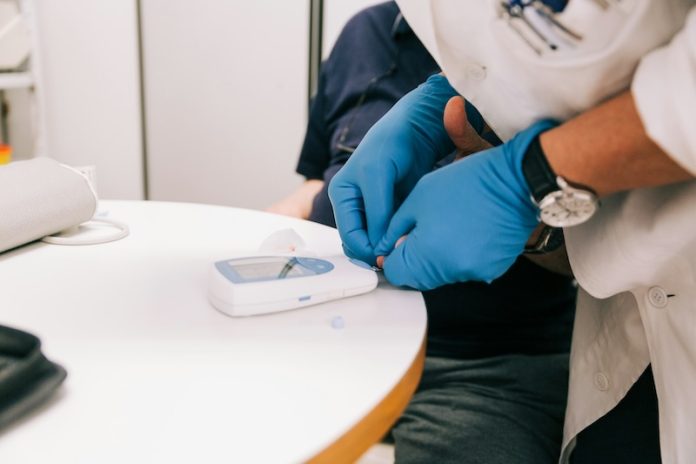
Diabetes is a chronic condition affecting millions of people worldwide, where the body struggles to regulate blood glucose levels. Among the various forms of diabetes, type 2 diabetes (T2D) is the most prevalent, accounting for about 90% of all cases.
T2D is primarily characterized by the inability of pancreatic beta-cells to produce enough insulin, a hormone that helps lower blood glucose levels.
A recent study from the University of Oxford has brought new understanding to the progression of T2D, suggesting that glucose metabolites, rather than glucose itself, play a crucial role in the disease’s development.
In people with T2D, the pancreatic beta-cells fail to release sufficient insulin, leading to chronic hyperglycemia, a condition where blood glucose levels remain persistently high.
Over time, this high blood sugar can cause a gradual decline in the function of beta-cells, which exacerbates the condition. However, the exact cause of beta-cell failure in T2D has remained somewhat of a mystery—until now.
The study, led by Dr. Elizabeth Haythorne and published in Nature Communications, found that it is not glucose itself but a glucose metabolite that is responsible for damaging pancreatic beta-cells.
The research showed that when glucose metabolism occurs too rapidly due to chronic hyperglycemia, it creates a metabolic bottleneck within the beta-cells.
This bottleneck leads to the accumulation of upstream metabolites, which ultimately impairs the cells’ ability to function properly.
Interestingly, the researchers discovered that by slowing the rate of glucose metabolism, the harmful effects on beta-cells could be mitigated. This finding is significant because it opens the door to new strategies for preventing or slowing the decline of beta-cell function in people with T2D.
By targeting the rate of glucose metabolism, it may be possible to preserve beta-cell function and improve the management of T2D.
The role of insulin in regulating blood glucose is vital, as both excessively low and high blood sugar levels can lead to severe health complications.
In T2D, while the beta-cells are still present, their insulin content is reduced, and the connection between glucose levels and insulin release is impaired.
The study’s findings are crucial because they provide a clearer picture of why beta-cells fail in T2D, pointing to a metabolic imbalance as a key factor.
Understanding this mechanism has the potential to revolutionize the way T2D is treated.
If researchers can develop therapies that slow down glucose metabolism in beta-cells, they might be able to prevent the metabolic bottleneck and preserve the cells’ ability to produce insulin. This could lead to more effective treatments for the millions of people living with T2D.
While these findings are promising, it’s important to remember that lifestyle changes remain a cornerstone of T2D prevention and management. Here are some key strategies to help prevent the onset of T2D:
Maintain a Healthy Weight: Being overweight or obese is one of the most significant risk factors for T2D. Even a modest weight loss of 5-10% can substantially reduce the risk of developing the disease.
Exercise Regularly: Physical activity helps maintain a healthy weight, improves insulin sensitivity, and lowers blood glucose levels. Aim for at least 30 minutes of moderate exercise most days of the week.
Eat a Balanced Diet: A diet rich in whole grains, fruits, vegetables, and lean proteins, and low in processed and sugary foods, can help maintain healthy blood glucose levels.
Avoid Smoking: Smoking increases the risk of developing T2D and other serious health conditions. Quitting smoking is one of the best steps you can take for your health.
Limit Alcohol Consumption: Moderate alcohol consumption is generally safe, but excessive drinking can increase the risk of T2D. It’s recommended to limit alcohol to one drink per day for women and up to two drinks per day for men.
Get Enough Sleep: Poor sleep can negatively affect your metabolism and increase the risk of T2D. Aim for 7-9 hours of quality sleep each night.
Manage Stress: Chronic stress can lead to higher blood glucose levels. Incorporating stress management techniques, such as exercise, meditation, or relaxation exercises, can help reduce this risk.
While these lifestyle changes are effective in reducing the risk of T2D, they may not be sufficient for everyone. Some individuals may still require medication or other medical interventions to manage their blood glucose levels effectively.
This groundbreaking study by Dr. Haythorne and her team offers new hope in the fight against T2D by providing a deeper understanding of the disease’s underlying mechanisms.
As research continues, we may see the development of new treatments that target glucose metabolism, offering better outcomes for those living with T2D.
If you care about diabetes, please read studies that pomace olive oil could help lower blood cholesterol, and honey could help control blood sugar.
For more information about diabetes, please see recent studies about Vitamin D that may reduce dangerous complications in diabetes and results showing plant-based protein foods may help reverse type 2 diabetes.
Copyright © 2024 Knowridge Science Report. All rights reserved.



